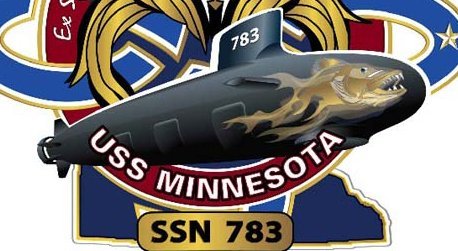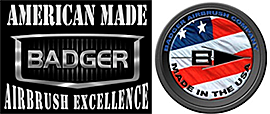
Despite the inauspicious start, the Balloon Corps served with honor at various locations: the Siege of Yorktown, the Battle of Fair Oaks, the Seven Days Battle outside Richmond, the Battle of Fredericksburg and other clashes. While some theaters of the Civil War were characterized by static lines, sieges and what later developed into the trench warfare of the Great War, many others saw a new type of highly mobile warfare. Troops and artillery engaged in rapid strikes and counterstrikes, maneuvered over great open areas punctuated by towns, farmsteads, mill, bridges and railway junctions, any of which could become a vital strategic point in a matter of hours or even minutes. Observation balloons became immensely useful in overseeing these wide battlefields and reacting to sudden developments. They could track the movement of armies up to a day’s march away.

Ships, however, are a special case. The sky they’re silhouetted against can have wildly different colors and illumination levels, making it impossible to paint a ship one single color that matches its surroundings. A fundamentally new type of camouflage was needed.

The years leading up to the Great War saw numerous entertaining but unsuccessful attempts to solve the problem. Inventors proposed rendering ships invisible with mirrors or disguising them as clouds, whales or even islands – the last one attempted by no other engineer than Edison himself.

In September 1914, two months after the outbreak of the Great War, British zoologist John Graham Kerr wrote a letter to First Sea Lord Winston Churchill, proposing a new approach to naval camouflage. He proposed paint schemes that, rather than blending into the sky, use disruptive coloration, a phenomenon often seen in the animal world: strongly contrasting patches that break up the outline, hopefully defeating visual rangefinders on enemy ships. He tried to mix this with another technique, countershading: painting the upper, better-illuminated parts of the ship darker and the lower, shadow-covered ones lighter, making the apparent color of the vessel more uniform. Always interested in technology, Churchill supported the idea and initiated some tests but these petered out after he left the office in 1915.
By February 1917, Britain found itself in dire straits. German U-boats were achieving spectacular successes against both military and merchant ships and the announcement of unrestricted submarine warfare was a sinister portent. Desperate for any protection against torpedo attacks, military decision makers grew more receptive to unusual ideas.

A new proposal came, this time not from a scientist but an artist. Norman Wilkinson was a marine painter (one of his paintings went down with the Titanic) and was serving in the Royal Naval Volunteer Reserve at the time, running anti-submarine and minesweeping patrols. Being on good terms with the military, his idea was received more favorably than Kerr’s a few years earlier. During and after the war, Kerr claimed that his idea was stolen but Wilkinson maintained that he got it from 4th century Roman writer Vegetius, who wrote about how Julius Caesar scouted British shores with ships painted blue-green.

Wilkinson did away with the notion of blending in altogether, proposing painting ships with broken stripes of contrasting colors. At the time, U-boats had approximately 30 seconds to sight a target, as longer exposure was likely to expose the periscope to discovery. The slow torpedoes had several minutes of travelling time from typical attack distances; an 8-10° mistake in aiming was enough to miss completely.

Wilkinson claimed that his paint schemes not only prevented the enemy from identifying targets but also made it impossible to judge the heading of a ship accurately enough. In fact, it might confuse a U-boat captain during first sighting so much that he’d navigate to a disadvantageous firing position in the first place.

He created small wooden ship models painted with his schemes and set them against a painted seascape in a studio, inviting experienced rangefinders to look at them through a periscope from 10 feet away and guess the heading. One experiment was made by King George V, who formerly served in the Royal Navy. The king guessed “south by west,” and was surprised to learn the actual heading was east-southeast.

Wilkinson’s schemes were adopted and more than 4,000 British ships were given the so-called dazzle camouflage or razzle dazzle by the end of the war, with America also adopting the technique. Every ship was given a unique pattern to prevent German U-boats from discovering regularities that could be exploited. Contemporary photographs don’t do justice to the range of colors used but green, mauve, orange and blue were also present in addition to black and white.

Statistical analysis of the effectiveness of razzle dazzle was inconclusive but it certainly acted as a morale booster, as sailors serving onboard such ships felt safer. According to the personal testimony of one German U-boat captain, a camouflaged ship could even be mistaken for two separate ships from a distance.
Dazzle camouflage inspired art and fashion and went on to be used in WWII but it started to diminish: better rangefinders and radar rendered it largely useless, though it still hindered targeting by submarines. An interesting but eventually unsuccessful alternative for both ships and planes was diffused-lighting camouflage. The system had floodlights hanging overboard and illuminating the side of the ship with a light whose intensity matched that of the background so the ship wouldn’t appear as a black silhouette against a slightly brighter night sky.

You can learn more about the technological innovations of the First World War on our Fields of WWI Tour in 2018.



































Confusion and miss direction is a fact of Magic Tricks. Good Show.